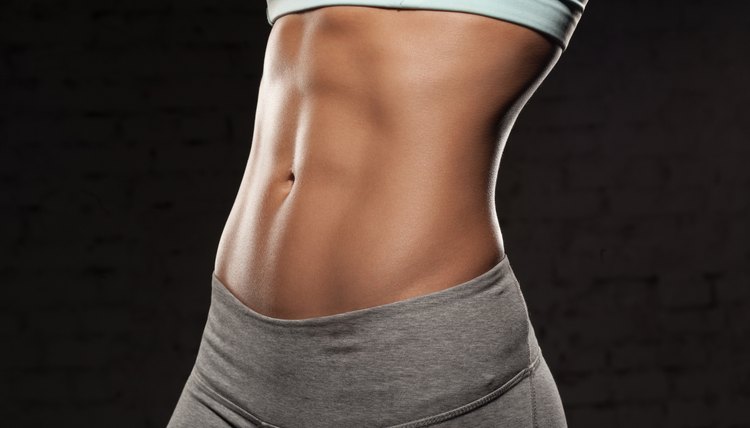What does fact checked mean?
At SportsRec, we strive to deliver objective content that is accurate and up-to-date. Our team periodically reviews articles in order to ensure content quality. The sources cited below consist of evidence from peer-reviewed journals, prominent medical organizations, academic associations, and government data.
The information contained on this site is for informational purposes only, and should not be used as a substitute for the advice of a professional health care provider. Please check with the appropriate physician regarding health questions and concerns. Although we strive to deliver accurate and up-to-date information, no guarantee to that effect is made.
The Best Exercises for the Waist & Midriff

Discovering the best exercises for the waist and midriff requires understanding how the abdominal musculature works. While many believe that crunches and sit-ups are the best way to work the abs, the truth is that the abdominal musculature is primarily designed to stabilize the spine. With this in mind, choosing the best exercises for the waist and midriff involve stabilization, or isometric exercises.
Plank
The popularity of the plank is growing exponentially, and for good reason. Trainers have been using this exercise for years to develop core strength and endurance for all of their clients. The plank dates back further than that though, as the plank has been a staple in Yoga for a very long time. The plank is done by lying face down, bringing the elbows directly beneath the shoulders and lifting the hips off the ground to form a straight line through the shoulders, hips, knees and ankles. A beginner might start with three sets of 20 seconds, gradually increasing to 1-minute holds.
The Hundred
The Hundred, a Pilates exercise, is another increasingly popular waist and midriff exercise. The Hundred is done by lying on your back with your feet in the air -- legs bent at 90 degrees for beginners -- lifting the chest and shoulders off the floor. Where many people go wrong is that they go right into the motion. Instead, focus on pulling the belly button down flat so that the abdominals are as flat as possible. When this is accomplished, the arms are raised in little “fluttering” motions 100 times. Be sure to maintain flat abdominals throughout the entire motion.
Side Plank
The side plank, which as its name suggests, is performed by lying on the side and lifting the abdominals, rather than lifting from the traditional plank position. The difference is that the side plank focuses more on the obliques, or the lateral abdominal muscles. Both are equally important to creating a strong, toned waist and midriff. To correctly do the side plank, lie on your side with your elbow directly under the shoulder. Your feet can be stacked one on top of the other for a difficult version, or staggered for an easier option. Lift your hips into the air, making a straight line through the shoulders, hips, knees and ankles. Be sure the shoulder does not end up by the ear. Instead hold the shoulder in its natural position to maintain the correct posture. A beginner should start with three sets of 20 seconds and gradually increase the holds to 1 minute in duration.
References
Writer Bio
Chris Chinn has been a personal trainer for more than five years, earning his Bachelor of Science in health and exercise science from Colorado State University as well as seven national certifications. With more than 6,000 training and consulting hours, Chinn began writing in 2009 in an effort to improve the information available for all who seek it.
